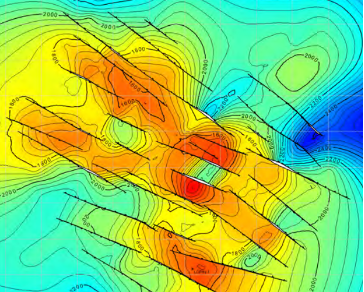Mark Wilkinson, at the University of Edinburgh, has been coordinating efforts to characterise potential CO2 storage sites in Portugal, Spain and France.
As part of the PilotSTRATEGY project, Wilkinson and colleagues in industry and academia have gathered existing knowledge and collected new data on the geological characteristics of three sites identified in the STRATEGY CCUS project as promising for CCUS: the Lusitanian Basin off the coast of Portugal, the onshore Ebro Basin in Spain and the Paris Basin in France.
Because the injection of CO2 into geological storage sites will displace underground waters, the hydrogeological systems of the three study areas were also examined.
“We are looking for sites in which CO2 storage will have a minimal environmental impact and minimal chance of leakage as safety is paramount,” says Wilkinson. “The porosity and permeability of storage-site rocks are key to getting the CO2 in the reservoir and keeping it there.”
Lusitanian Basin – Portugal
Out of the four potential storage sites identified in the Lusitanian Basin, the team found that the Early Cretaceous Torres Vedras Group in the northern part of the study area had the most promising features. Studies of the onshore saline aquifers closest to the offshore location, i.e., those nearest the Figueira da Foz coastal area, were used as “proxies” for the hydraulic systems of the offshore storage area and confirm that the migration of CO2 would not interfere with freshwater aquifers.
“This offshore storage site is composed primarily of sandstone and is quite isolated, making it very unlikely that any CO2 would ever make it to onshore formations,” Wilkinson says.
Ebro Basin – Spain
In Spain, the Lopín structure (southern Ebro basin, Spain), also showed positive conditions for CO2 storage. Here, researchers from IGME (Instituto Geológico y Minero de España) applied a novel method to integrate previously collected data and new data, acquired by analysing the reflection of acoustic waves sent thousands of meters under the surface, to obtain a more accurate 2D picture of the types and shapes of the rocks forming the reservoir. In this area, the aquifer system is too deep to be used for drinking water production and thus, is suitable for CO2 storage.
Paris Basin – France
The large amount of data available on the Paris Basin, due to previous exploration for oil, gas and geothermal energy production, meant that researchers were able to characterise two potential injection sites and the surrounding area in great detail. This site is the only one that is heavily used on the surface (for agriculture) so it will be particularly important to ensure that CO2 storage doesn’t interfere with water supplies and that the public is on board. However, as Wilkinson points out, parts of the site have previously been used for gas storage: “CO2 storage could be seen as the latest chapter in some ways.”
The data gathered on the three sites, will feed into digital models that can estimate the amount of CO2 that can be injected and how it will behave. “We are confident that these three sites are suitable for CO2 storage and that the evidence we are generating will encourage regulators and politicians to give the go ahead to start CO2 injection and take us a step closer to the low carbon future we are aiming for,” Wilkinson says.
As part of the PilotSTRATEGY project, sites in Greece and Poland will also be examined. Reflecting on the experience of working on the project so far, he says: “A big success of the PilotSTRATEGY project has been the creation of multidisciplinary teams in each country, which are effectively sharing knowledge among themselves and with teams in other countries to accelerate development CCS in Europe.”
Further reading:
D2.7_ConceptualGeolModels.pdf
D2.11_PilotSTRATEGY_Regional_Hydrogeological_Systems_Final.pdf
Image: Map reflecting depths below mean sea level of an area of interest in Spain (from D2.7).



